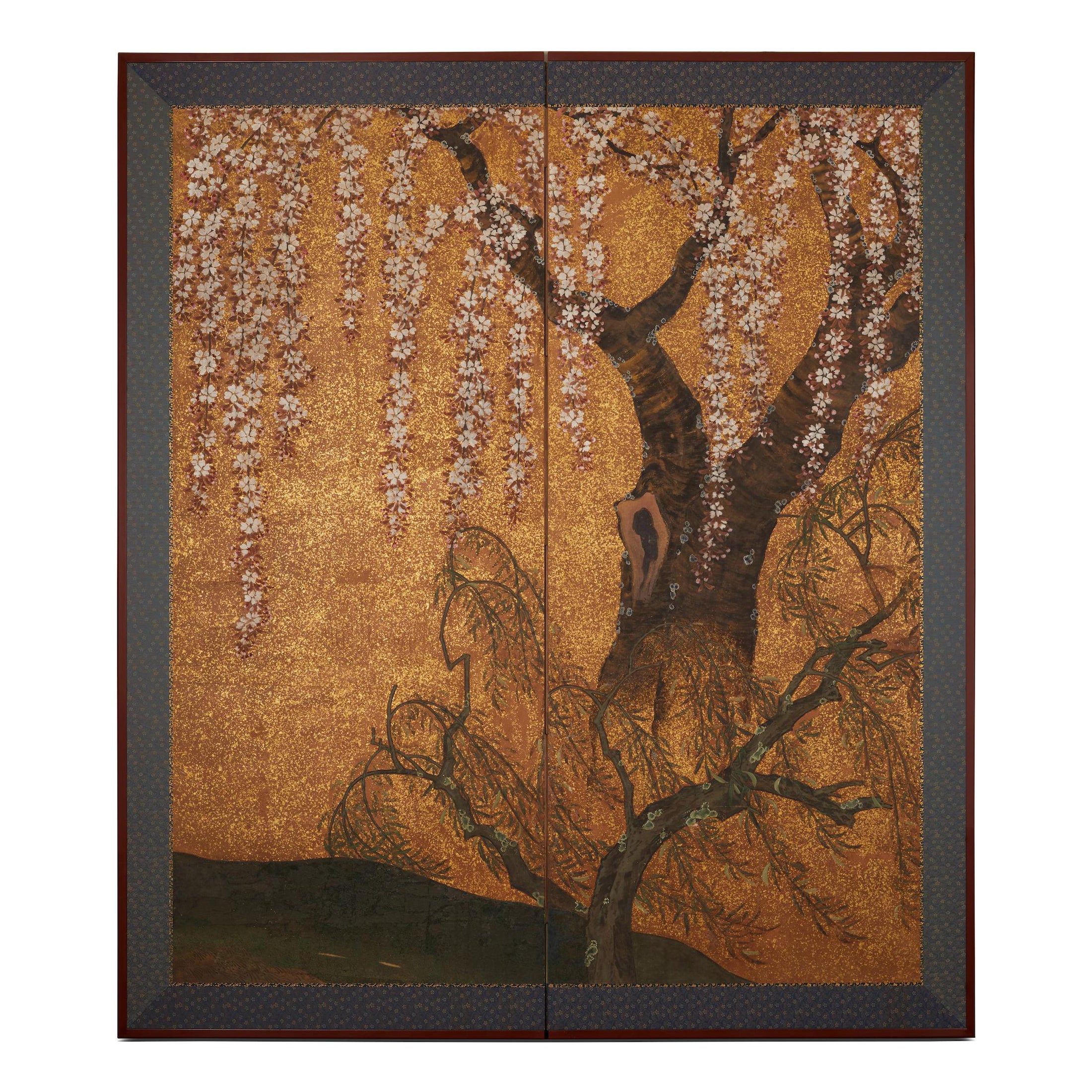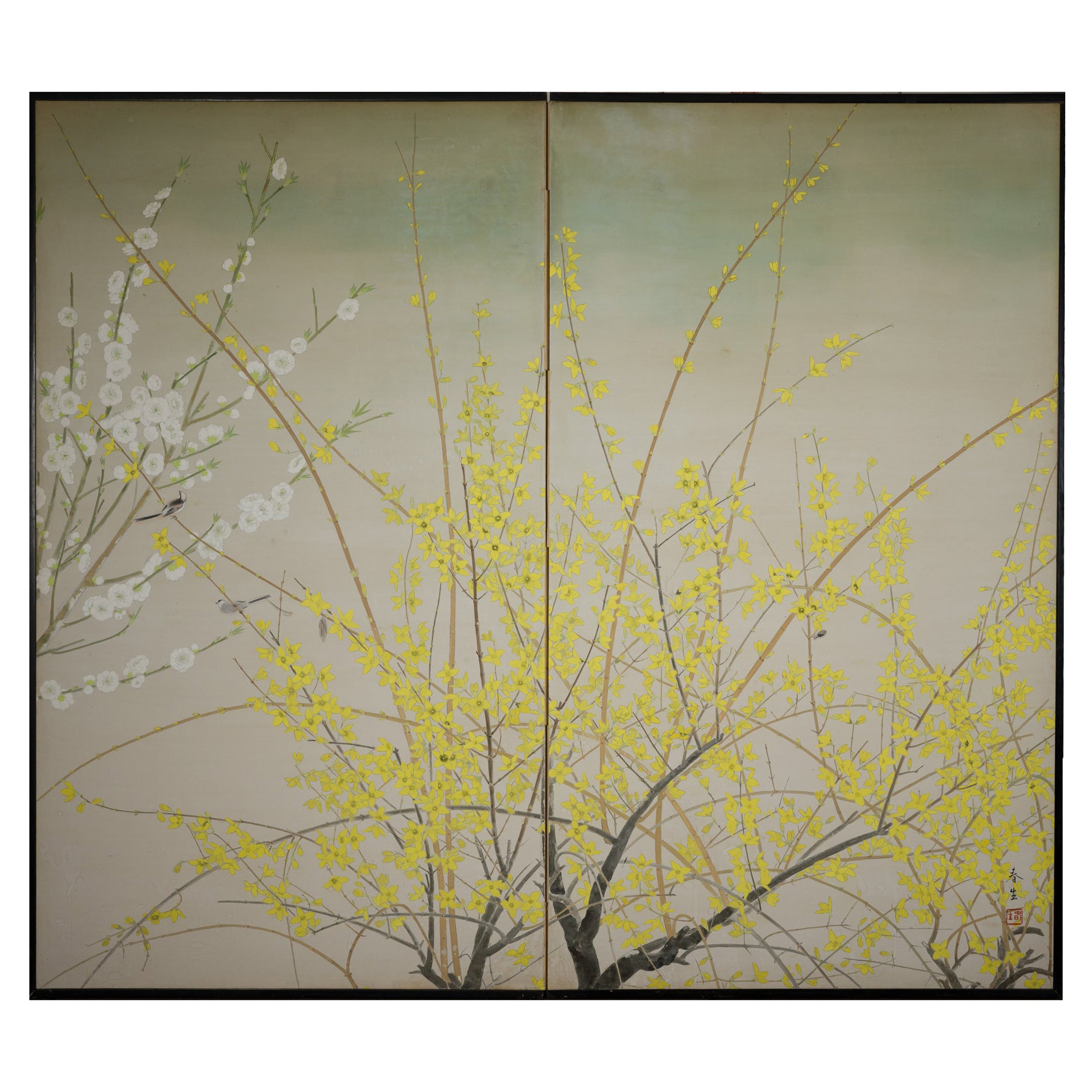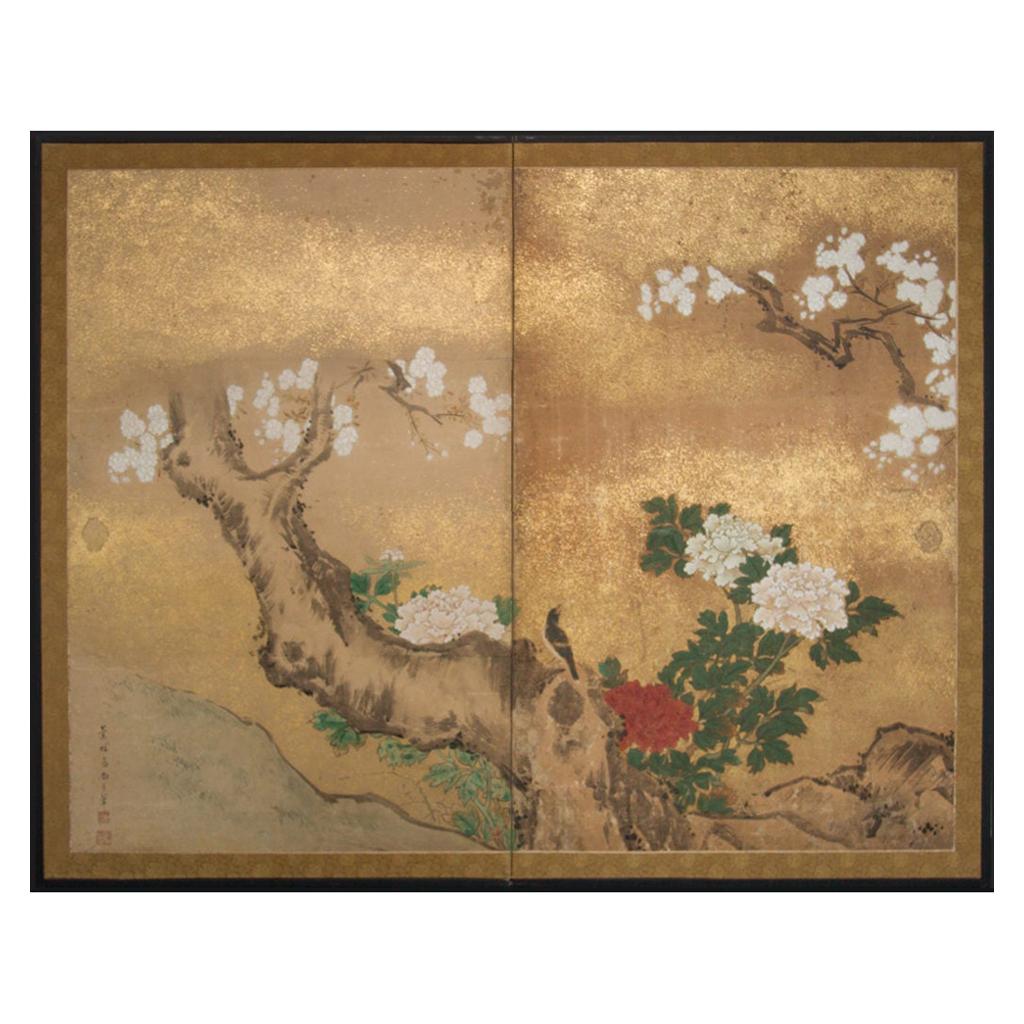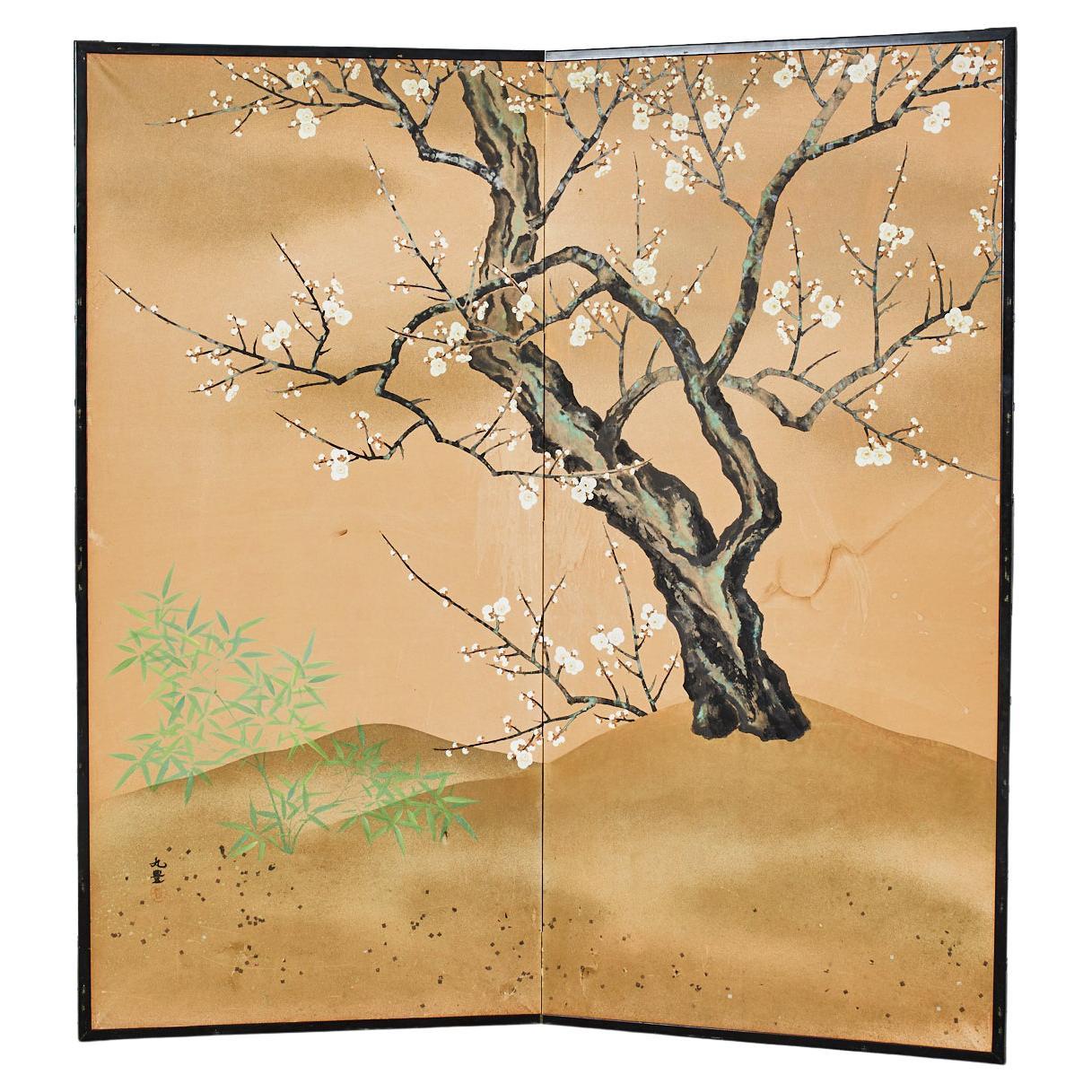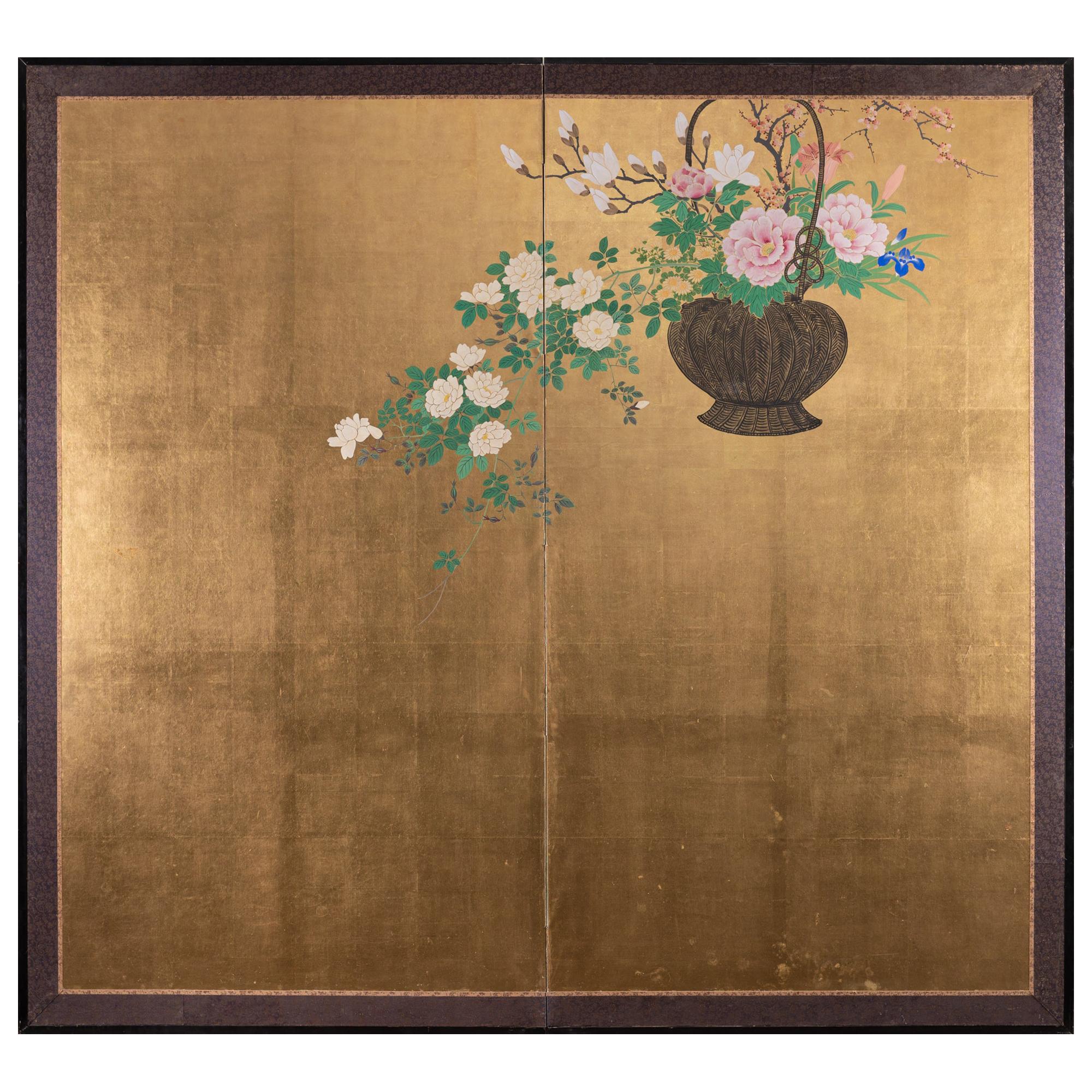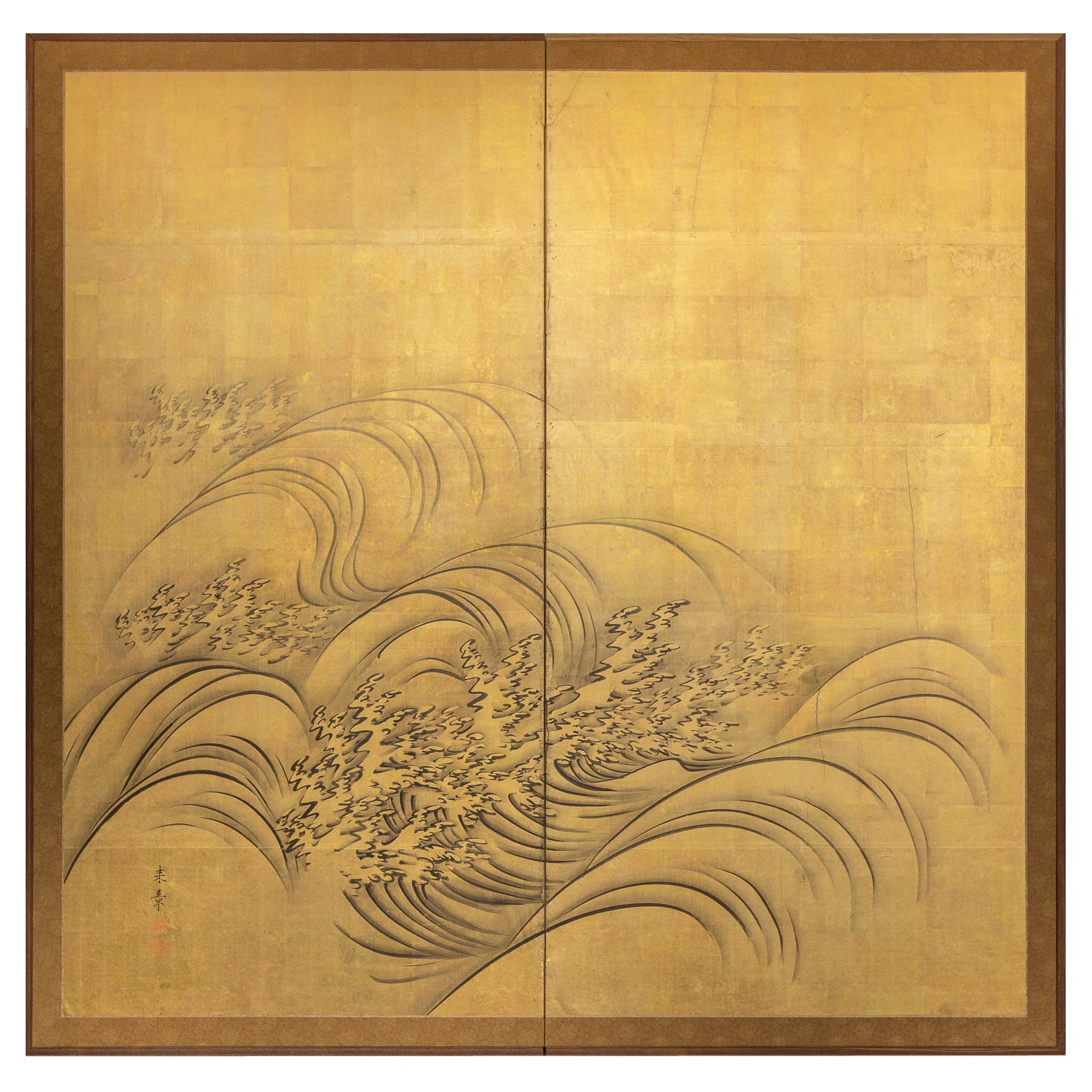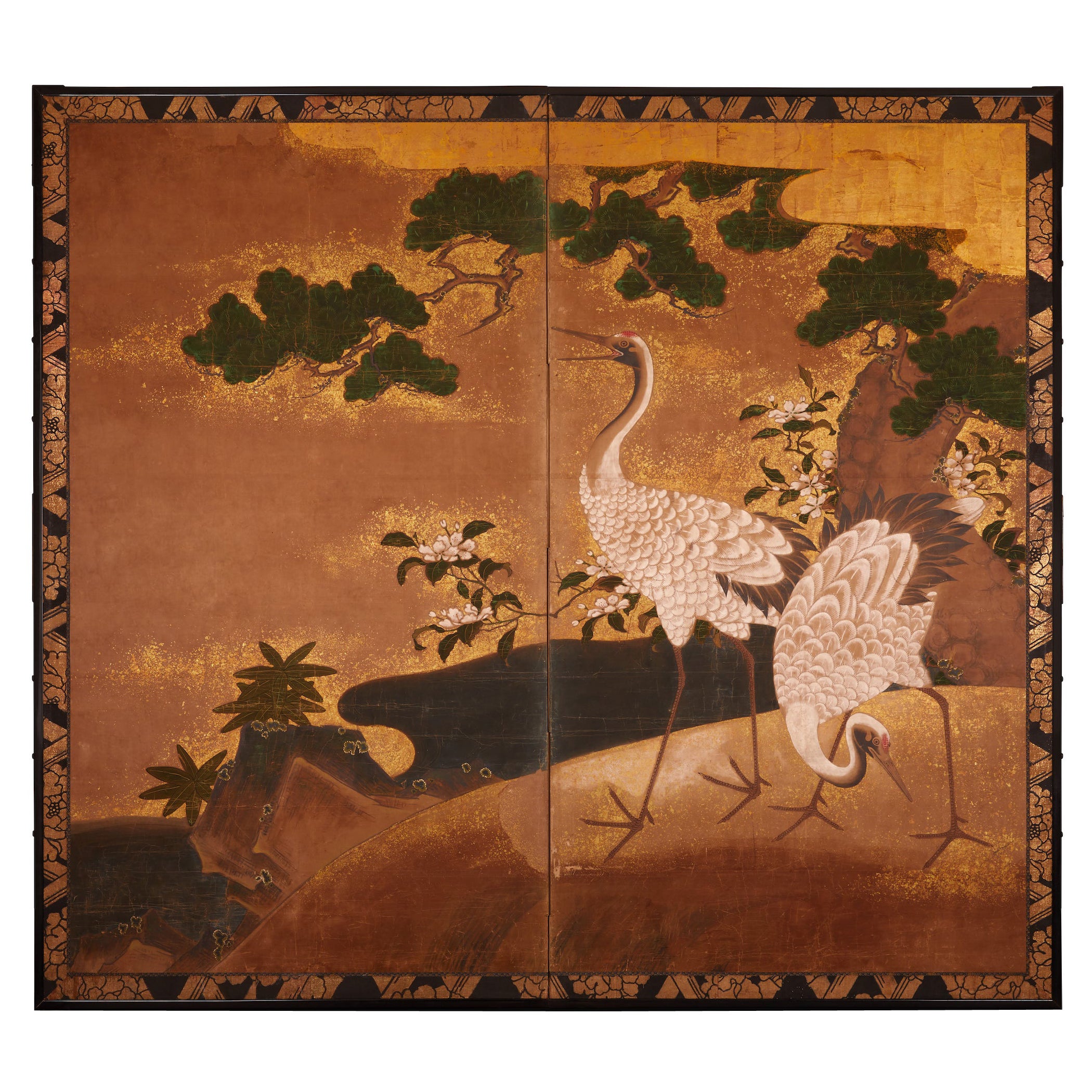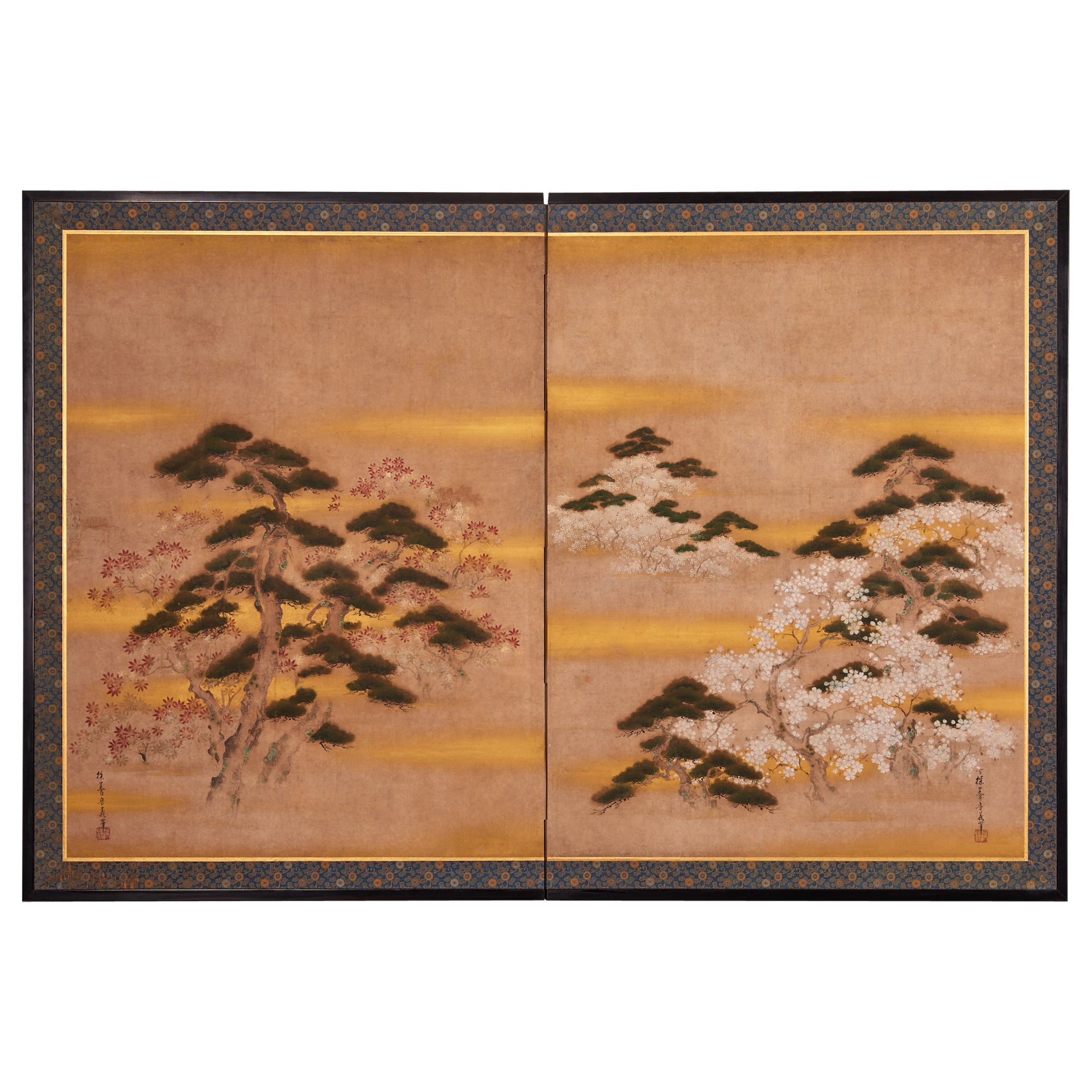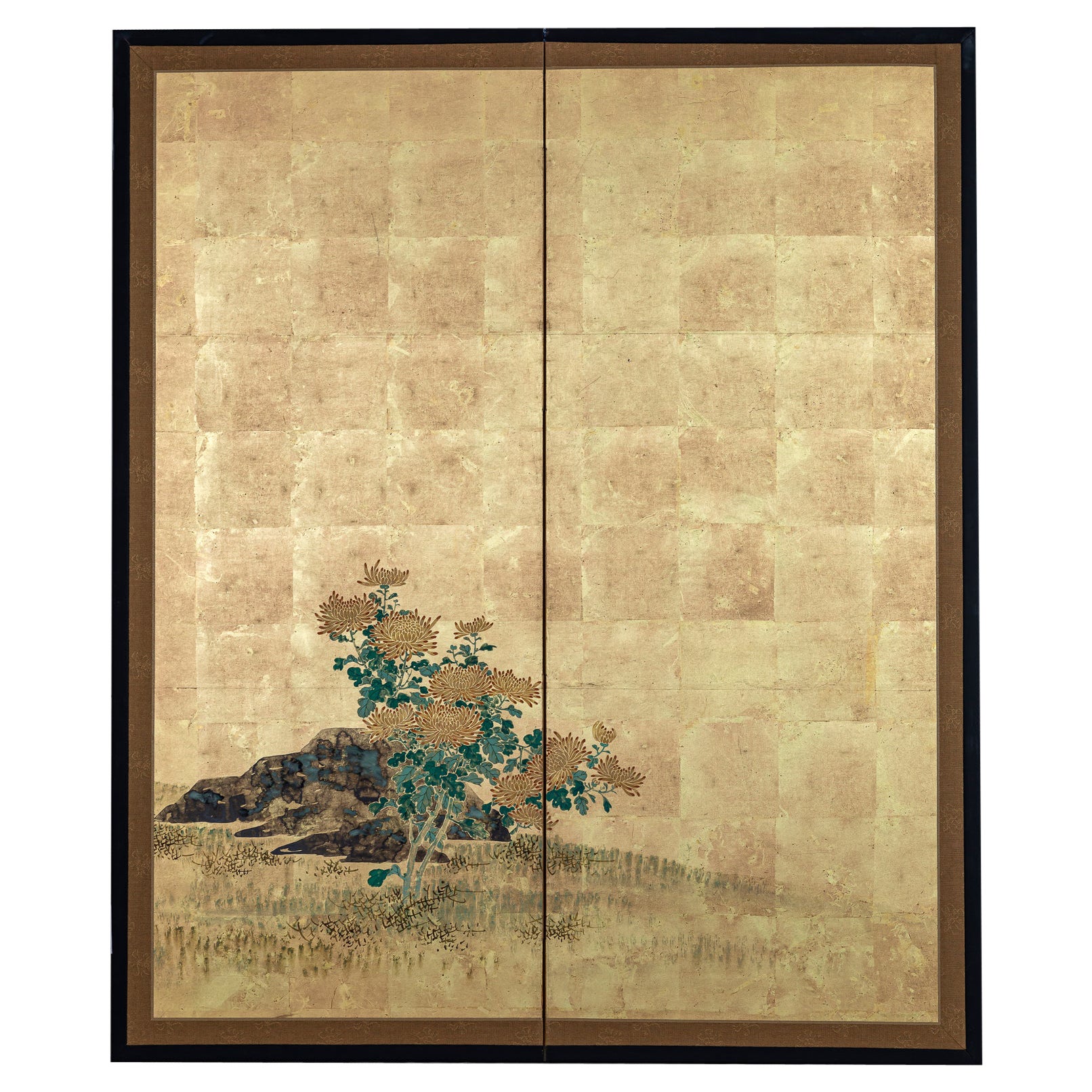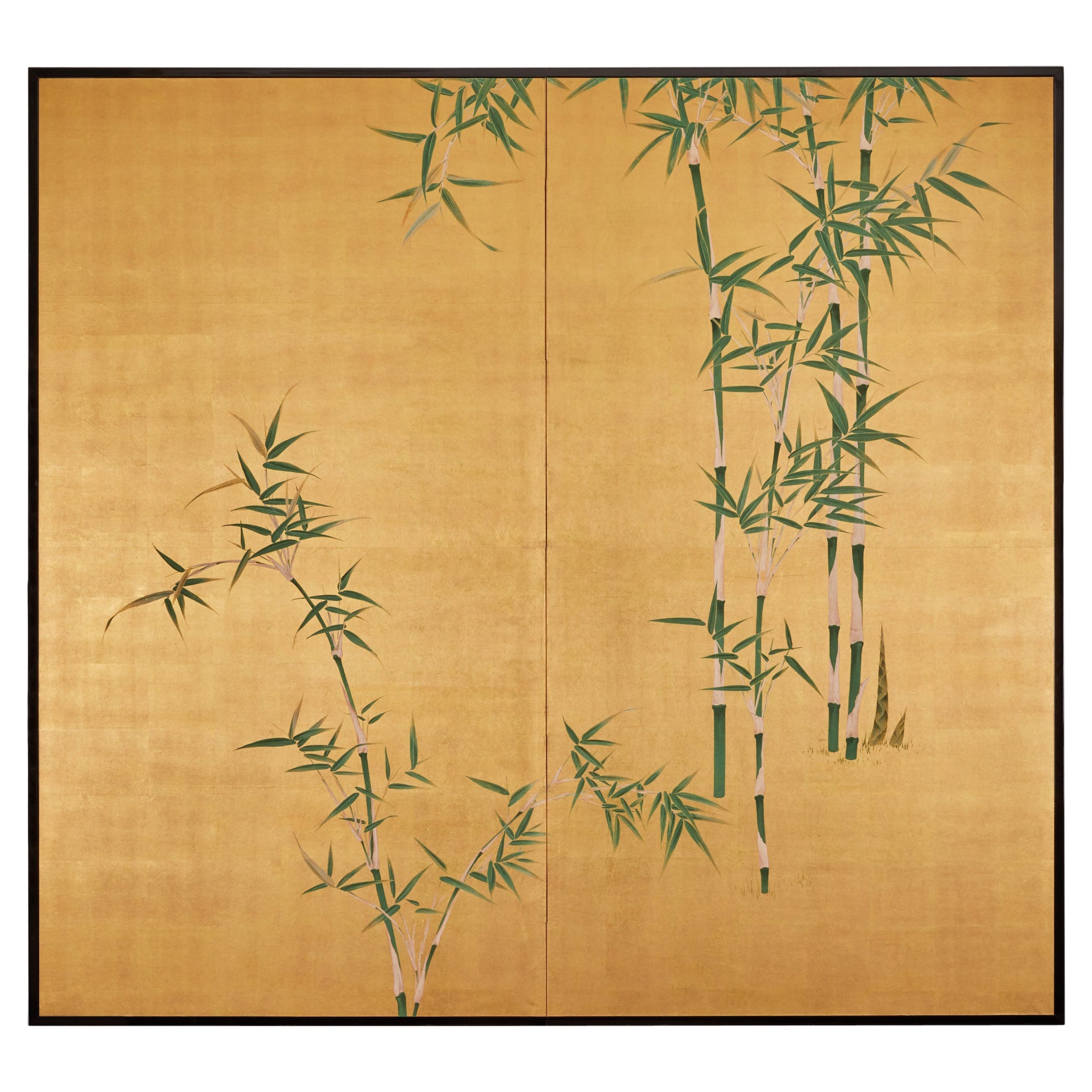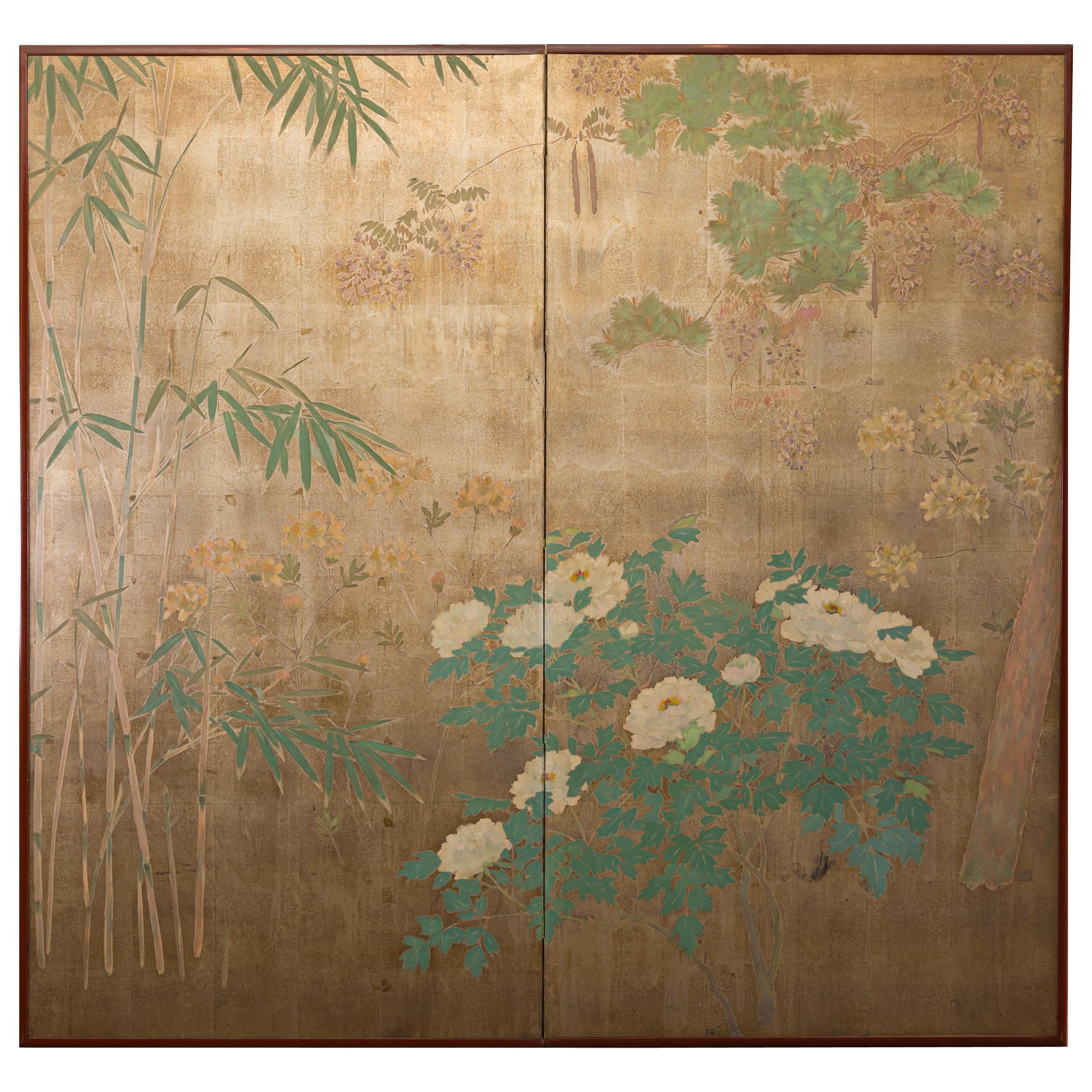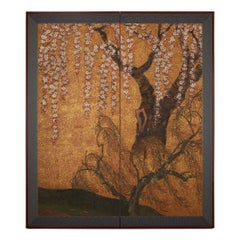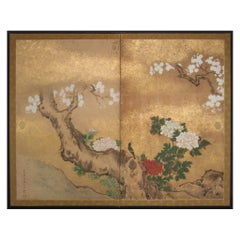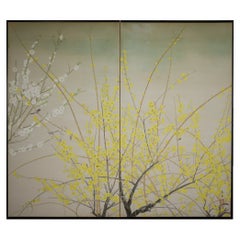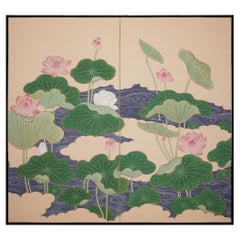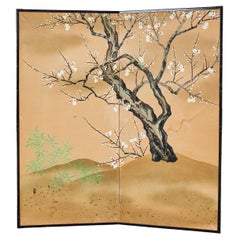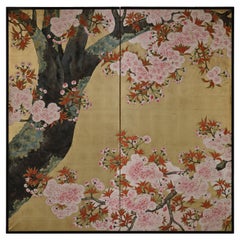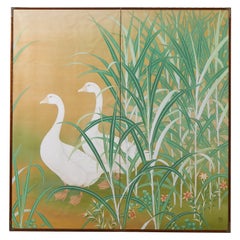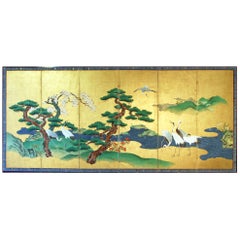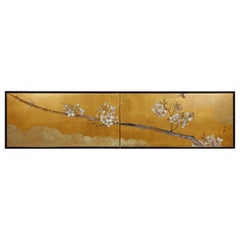
Japanese Two-Panel Screen, Cherry Blossoms on Gold
View Similar Items
Want more images or videos?
Request additional images or videos from the seller
1 of 10
Japanese Two-Panel Screen, Cherry Blossoms on Gold
$21,275List Price
About the Item
- Dimensions:Height: 18.25 in (46.36 cm)Width: 72 in (182.88 cm)Depth: 0.75 in (1.91 cm)
- Materials and Techniques:
- Place of Origin:
- Period:
- Date of Manufacture:circa 1900
- Condition:Condition report upon request.
- Seller Location:Hudson, NY
- Reference Number:Seller: S18911stDibs: LU855131777992
About the Seller
5.0
Recognized Seller
These prestigious sellers are industry leaders and represent the highest echelon for item quality and design.
Established in 1971
1stDibs seller since 2008
166 sales on 1stDibs
Typical response time: 8 hours
Associations
The Art and Antique Dealers League of AmericaAntiques Associations Members
Authenticity Guarantee
In the unlikely event there’s an issue with an item’s authenticity, contact us within 1 year for a full refund. DetailsMoney-Back Guarantee
If your item is not as described, is damaged in transit, or does not arrive, contact us within 7 days for a full refund. Details24-Hour Cancellation
You have a 24-hour grace period in which to reconsider your purchase, with no questions asked.Vetted Professional Sellers
Our world-class sellers must adhere to strict standards for service and quality, maintaining the integrity of our listings.Price-Match Guarantee
If you find that a seller listed the same item for a lower price elsewhere, we’ll match it.Trusted Global Delivery
Our best-in-class carrier network provides specialized shipping options worldwide, including custom delivery.More From This Seller
View AllJapanese Two Panel Screen, Cherry Blossoms in Willow Landscape
Located in Hudson, NY
Dramatic and beautifully executed cherry blossoms trickle down the two panels with natural willows calmly coexisting with luminous gold dust fading to the ground. Mineral pigments an...
Category
Antique Mid-19th Century Japanese Paintings and Screens
Materials
Gold
Japanese Two-Panel Screen Peony and Cherry
Located in Hudson, NY
Japanese two-panel screen: Peony and Cherry, Edo period (circa 1800) painting, formerly fusuma (Japanese sliding doors), executed in the Kano school style, featuring a cherry tree in...
Category
Antique Early 1800s Japanese Edo Paintings and Screens
Materials
Gold Leaf
Japanese Two Panel Screen Cherry and Forsythia
Located in Hudson, NY
Mineral pigments on silk. Signature and seal read: Shunsei (or Haruo).
Category
Early 20th Century Japanese Paintings and Screens
Materials
Silk
Japanese Two Panel Screen, Lotus Leaves and Blossoms
Located in Hudson, NY
A lotus scene with flowers in bloom floating on the water's surface. As the lotus rise from below for an enlightening process that brings an abundance of purity and beauty. Mineral p...
Category
Early 20th Century Japanese Paintings and Screens
Materials
Wood, Lacquer, Paper
Japanese Two-Panel Screen Ikebana on Gold
Located in Hudson, NY
Japanese two-panel screen: Ikebana on gold. Meiji period (1868-1912) painting of a basket with beautifully arranged spring flowers in the style of ikebana (Japanese traditional flowe...
Category
Antique Late 19th Century Japanese Meiji Paintings and Screens
Materials
Gold Leaf
Japanese Two Panel Screen: Waves on Gold
Located in Hudson, NY
Ink on gold leaf with a silk brocade border. Signature reads: Nakajima Raishou (1796-1872). Student of Maruyama Okyo (one of Japan's most famous artists).
Category
Antique Mid-19th Century Japanese Paintings and Screens
Materials
Brocade, Silk, Paper
You May Also Like
Japanese Showa Two Panel Screen Blossoming Prunus Tree
Located in Rio Vista, CA
Serene Japanese Showa period two-panel folding byobu screen depicting a large spring blossoming prunus tree or plum tree. Beautifully painted with ink and natural color pigments on m...
Category
20th Century Japanese Showa Paintings and Screens
Materials
Brass
Early 20th Century Japanese Cherry Blossom Screen by Kano Sanrakuki
Located in Kyoto, JP
Cherry Blossoms
Kano Sanrakuki (1898-1981)
Showa period, circa 1930
2-panel Japanese Screen
Color, gofun and gold leaf on paper
Against a backdrop of gold-leafed ground, the lichen covered trunk and branches of the life-sized cherry blossom tree reach out and beyond the confines of the pictorial surface. The overall composition has a feeling of flatness which draws emphasis to the surface and the three-dimensionality of the cherry blossoms. Painstakingly built-up layers of thickly applied shell-white gofun detail the voluminous blossoms and cover large areas of this tour-de-force of Japanese Nihonga painting. By simplifying the background, minimizing the number of colors and depicting the blossoms with such heavy relief, the artist has emphasized the stunning presence of the cherry tree. The type of tree depicted is the Yae-Zakura; a double-layered type of cherry blossom famed for its beauty and strength. When we think of Japanese cherry blossoms, the first thing that comes to mind is Somei Yoshino variety, which has a single flower with five almost white petals. This type is fragile and easily blown away by strong wind or rain. Most of the double-flowered cherry blossoms begin to bloom when the Somei-Yoshino falls, and the flowering period lasts longer than that of the Somei-Yoshino.
Kano Sanrakuki originally studied painting at the Kyoto City Arts and Crafts School under the tutelage of Yamamoto Shunkyo...
Category
Early 20th Century Japanese Showa Paintings and Screens
Materials
Gold Leaf
Japanese Meiji Two Panel Screen Geese and Reeds
Located in Rio Vista, CA
Fantastic Japanese late Meiji period two-panel byobu screen by Hashimoto Koshu. The large screen features two white geese amid brightly colored reeds. The symbolism of geese and reeds was introduced to Japan from China in the 13th century. This was a popular subject for Japanese zen artists of the period. Beautifully crafted with exceptional brush strokes and details. Made with natural pigments in dramatic vivid colors of white, pink, and mint green on a silk background of gilt. Circa 1900 with artist seal on bottom right corner. Koshu studied Western art under...
Category
20th Century Japanese Meiji Paintings and Screens
Materials
Silk, Wood, Paper
Japanese Folding Screen Six Panels Painted on Gold Leaf
By Japanese Studio
Located in Brescia, IT
Paravento a sei pannelli di scuola giapponese Kano: paesaggio con bellissime ed eleganti gru vicino al fiume, con alberi di pino e sakura.
Dipinto a mano con pigmenti minerali ed inc...
Category
Antique Early 19th Century Japanese Edo Paintings and Screens
Materials
Gold Leaf
Early 19th Century Japanese Screen. Cherry Blossom & Pheasants by Mori Tetsuzan
Located in Kyoto, JP
Mori Tetsuzan (1775-1841)
Pheasants and Cherry Blossoms
Two-fold Japanese screen. Ink, color, gofun, gold and silver on paper.
A two-fold Japanese bir...
Category
Antique Early 19th Century Japanese Edo Paintings and Screens
Materials
Gold Leaf
Japanese Style Two-Panel Screen Winter Goose in Flight
Located in Rio Vista, CA
Dramatic Showa period two panel folding byobu screen depicting a large white goose in flight in an evening snow covered winter landscape. Made in the American school style watercolor...
Category
20th Century Showa Paintings and Screens
Materials
Brass
Recently Viewed
View AllMore Ways To Browse
Antique Japanese Lacquer Screens
Japanese Cherry Blossom Screen
Japanese Screen Cherry
Tea Screen
Cherry Blossom Screen
Cherry Blossom Painting Japanese
Japanese Folding Screen Screen
Japanese Antique Gold Screen
Meiji Silk
Japanese Screen Bamboo
Large Chinese Screens
Asian Gold Leaf Art
Chinese Art Panel
Japanese Insect
Japanese Folding Screens
Gold Folding Screen
Japanese Crane Art
Japanese Silk Painting 20th Century
